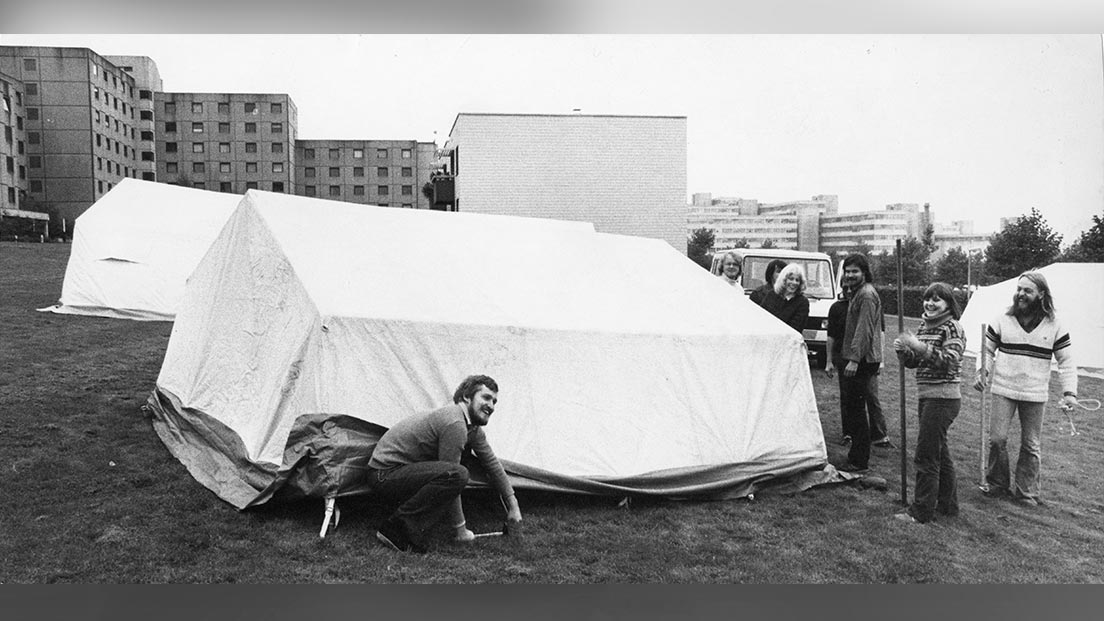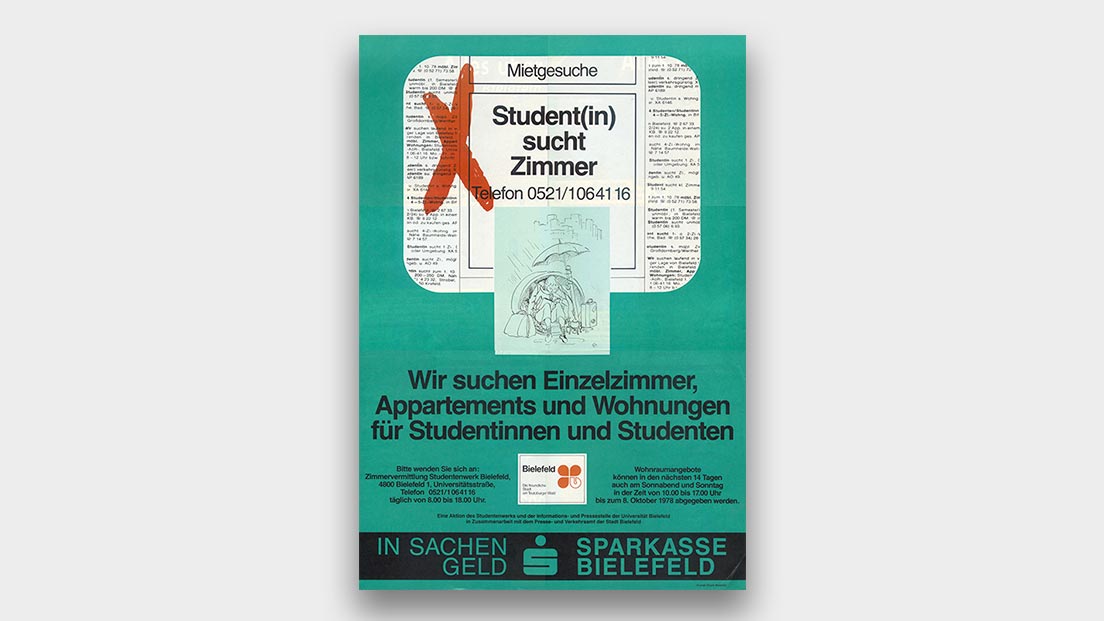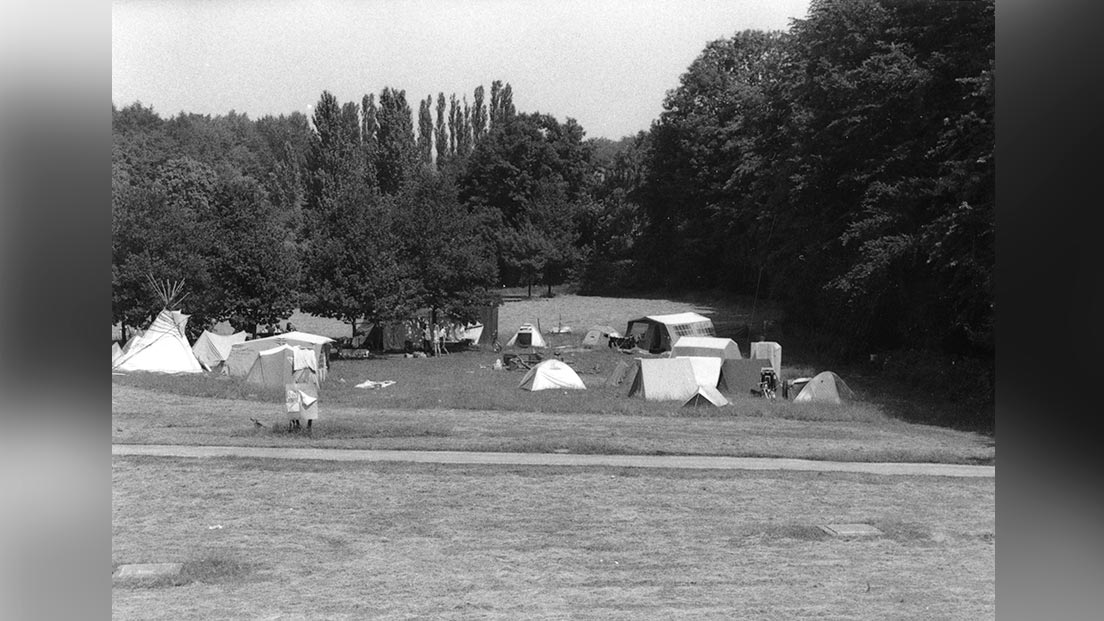
–
Photo: Helga Wehmeyer
Source: Universitätsarchiv Bielefeld, FOS 01104
Bielefeld was not the only university town in Germany to have this problem. Almost all towns had difficulties with student housing shortages. While the number of students continued to rise, federal expenditure for building new student housing was reduced. In Bielefeld, this problem was alleviated to an extent by the involvement of the Westfälisch-Lippische Universitätgesellschaft (University Society) in the construction of new student housing at Lohmannshof. This issue, however, is still highly topical in times of rising rents, especially in conurbations.
The biggest problems facing students seeking accommodation have not changed since the 1980s: In many cases, the rent for students was prohibitively high or the landlord made unreasonable demands. At the time of the “Tent City”, the official halls of residence were only big enough to accommodate just under 10 per cent of students (1,217 places in halls of residence for around 12,000 students). More than 35 years later, this ratio still holds true (2,447 places for approximately 24,500 students). Nevertheless, the housing situation for students has eased since the AStA (Student Union) tent protest on the university grounds because now considerably more apartments are rented by private individuals to students than at the beginning of the 1980s.

–
Source: Universitätsarchiv Bielefeld, PL 3/184
„No flat, no money – we live in a tent“
On 30 April, 1992, another “tent city” appeared on the university grounds. Thirty students, vocational students and a number of unemployed persons set up camp in the meadow next to the university power plant. In a leaflet, the group proclaimed: “No flat, no money – we live in a tent”. The pamphlet called on the then city director, Jürgen Heinrich, to provide adequate amounts of affordable housing in Bielefeld. The text finished with a well-known political slogan from Germany’s history: “Friede den Hütten! – Krieg den Palästen!” (Peace to the shacks! – War to the palaces!). The tents remained on the university grounds until the end of July, but new occupants moved in: In the final stage, no member of the initial group of activists were living there, only other homeless people. After the camp was taken down, the remaining tent dwellers were placed by the city in shelters for the homeless and allocated social housing.
–
Photo: Klaus Halbe
Source: Universitätsarchiv Bielefeld, FOS 01133

